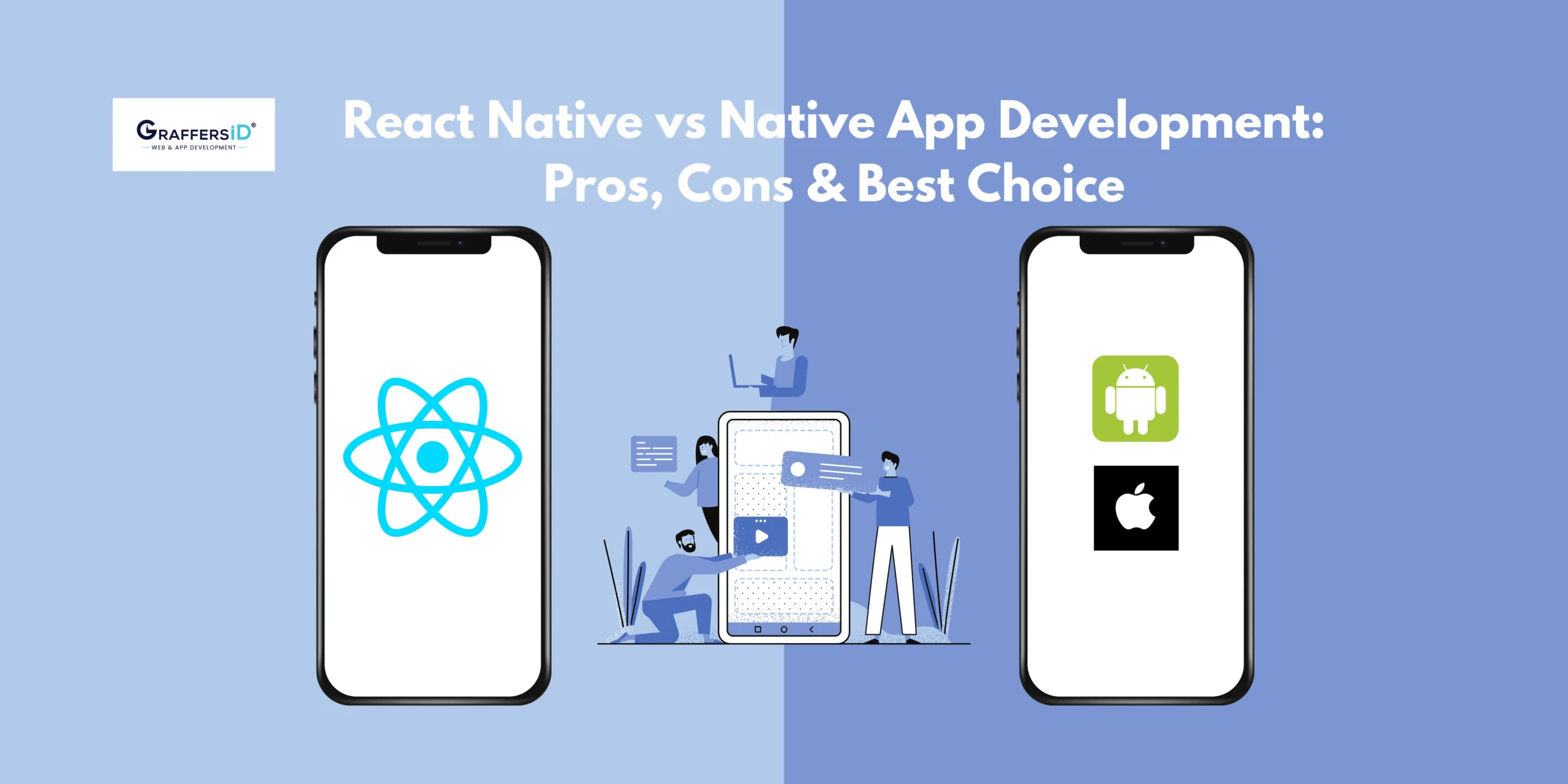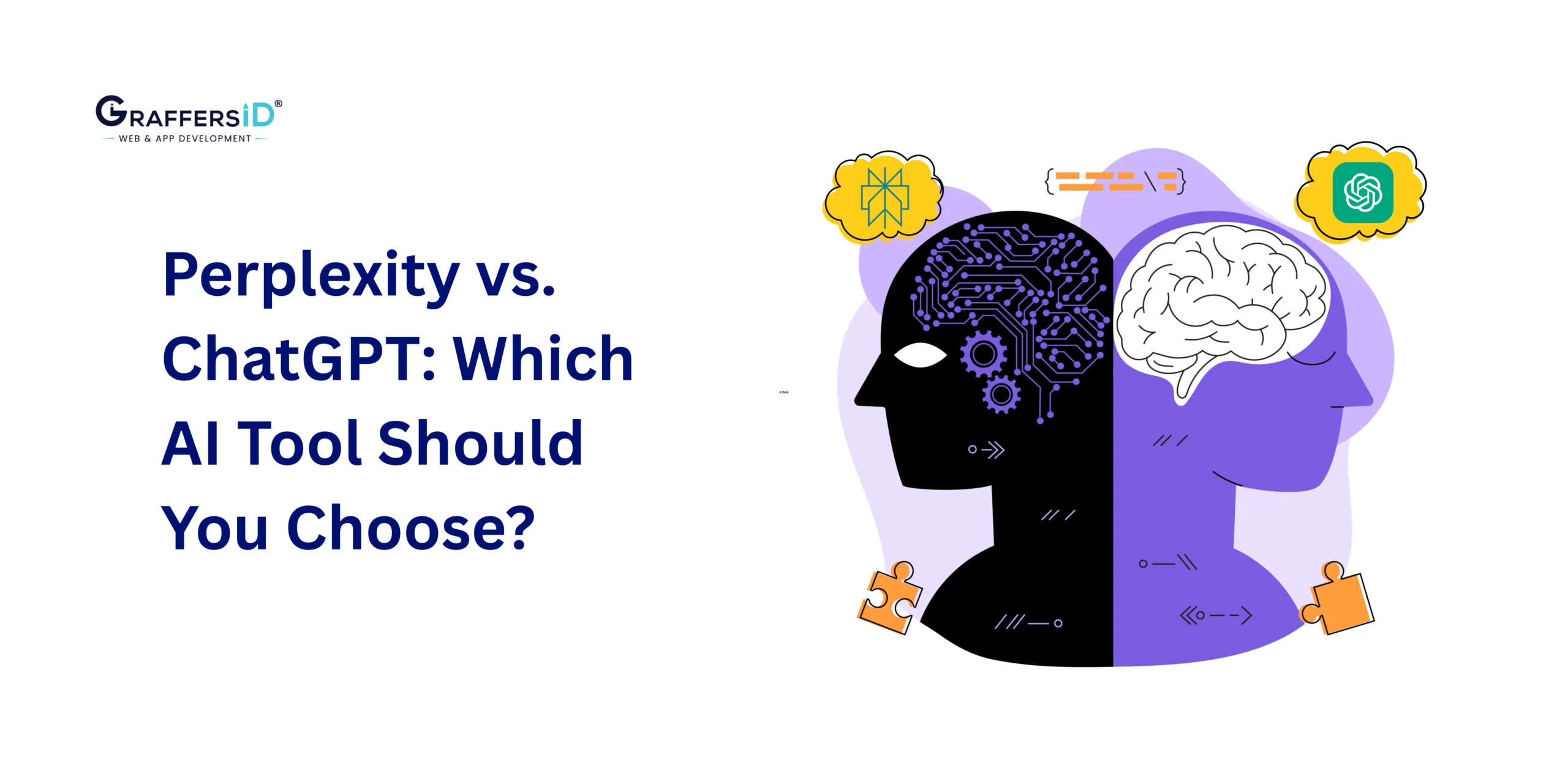In 2025, the mobile app development market will be more active and competitive. As mobile app development technologies advance, there are many options to consider. Businesses must make an informed choice when deciding between React Native vs native app development.
In this article, we’ll discuss the main differences, advantages, and drawbacks of React Native and Native app development so that you can determine what is best in 2025 for different stakeholders such as developers, startups, and businesses.
React Native vs Native App Development: Comparison Importance for Developers, Startups, and Businesses
The choice between React Native vs Native app development has an impact on scalability, security, performance, cost, and development speed. This article will help you make an informed choice by considering business concerns, technological benefits, and future-proofing your app.
Factors That Affect App Development Choices
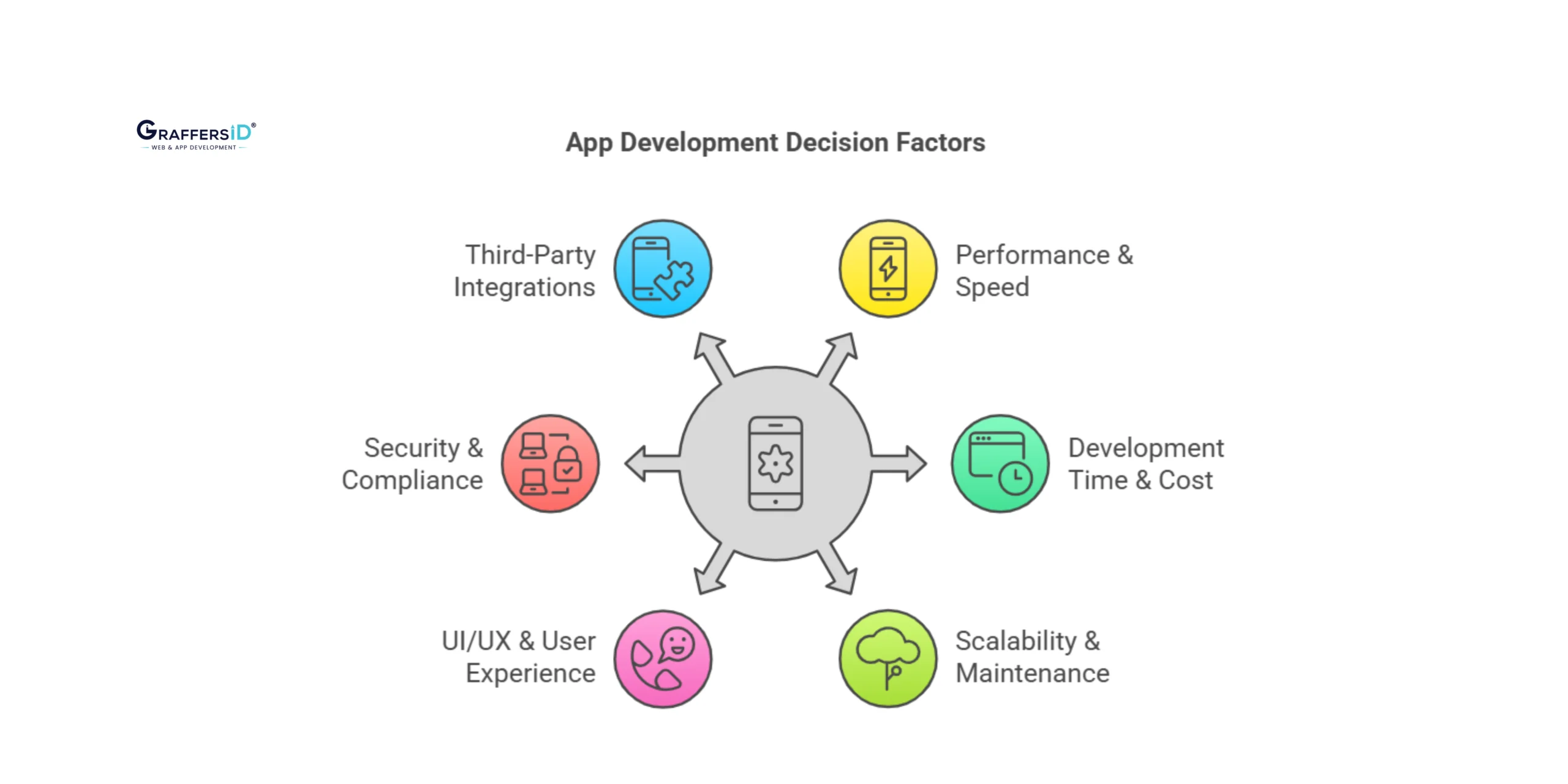
- Performance & Speed: How smoothly does the application function across various devices?
- Cost & Development Time: What is the overall investment needed?
- User Experience (UX): Does the application provide a smooth, native-like experience?
- Security & Compliance: Which platform provides more security features?
- Scalability & Maintenance: Which option is more stable in the long term and easier to maintain?
Read More: Difference Between ReactJS and React Native
2. What is React Native App Development?
Origin and Evolution of React Native
React Native, developed by Meta (previously Facebook), was introduced in 2015 as a JavaScript framework that allows developers to build cross-platform mobile applications using a single codebase. It gained immediate traction because it could offer a native-like user experience at a much lower development time and expense.
How React Native Facilitates Cross-Platform App Development
- Code Once, Run Anywhere: Write once in JavaScript and then run it on both iOS and Android.
- Rich Ecosystem: Get access to third-party libraries and reusable UI elements.
- Web & Desktop Support: React Native for Web allows developers to add their mobile applications to the web.
Benefits of React Native App Development
- Cost-effective: Having a common codebase for both Android and iOS is cost-effective.
- Faster Development: React Native enables you to share code between different platforms, which accelerates the development process.
- Hot Reloading: Changes are visible immediately without rebuilding the app.
- Community Support: React Native has a large and vibrant community that assists you in finding resources, tools, and solutions to common issues.
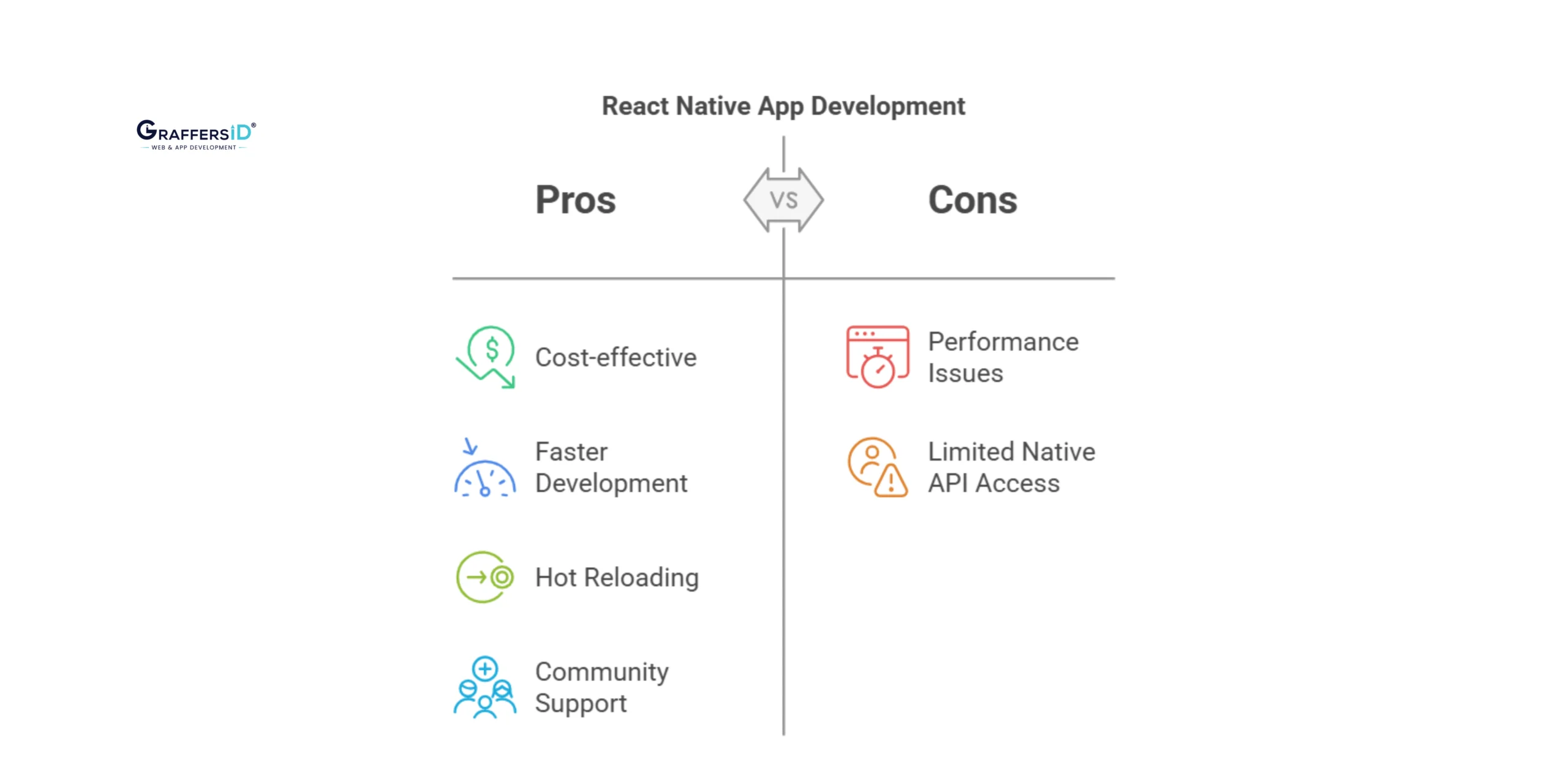
Challenges of React Native App Development
- Performance Issues: For resource-intensive applications, React Native might not be as fast as fully native applications as it communicates with native modules over a shared network.
- Limited Native API Access: While React Native provides access to an extensive variety of APIs, advanced features may still need native development.
Do you require skilled developers to build your React Native application? GraffersID’s team is ready to assist you in developing scalable, high-performance mobile applications.
3. What is Native App Development?
Overview of Swift (iOS) & Kotlin (Android) for Native Apps
Native app development involves using Kotlin for Android and Swift for iOS to develop platform-specific applications. These apps provide improved performance, security, and extensive hardware integration compared to cross-platform frameworks because they are fully optimized for their respective operating systems.
Native App vs Cross-platform App Development
In contrast to cross-platform app development, native applications are coded specifically for each platform, which means they are optimized for that platform’s operating system. It involves separate codebases for iOS and Android, unlike React Native, resulting in longer development times and increased costs.
Benefits of Native App Development
- Performance: Native apps are more efficient, especially for heavy, complicated applications such as gaming or those with complicated graphics.
- Full Access to Device Features: Native apps can utilize all the device’s capabilities, such as advanced camera functionality, location services, or sensors.
- Stability and Consistency: Native development offers improved long-term stability and prevents problems that can occur because of the abstraction layers in cross-platform app development solutions.
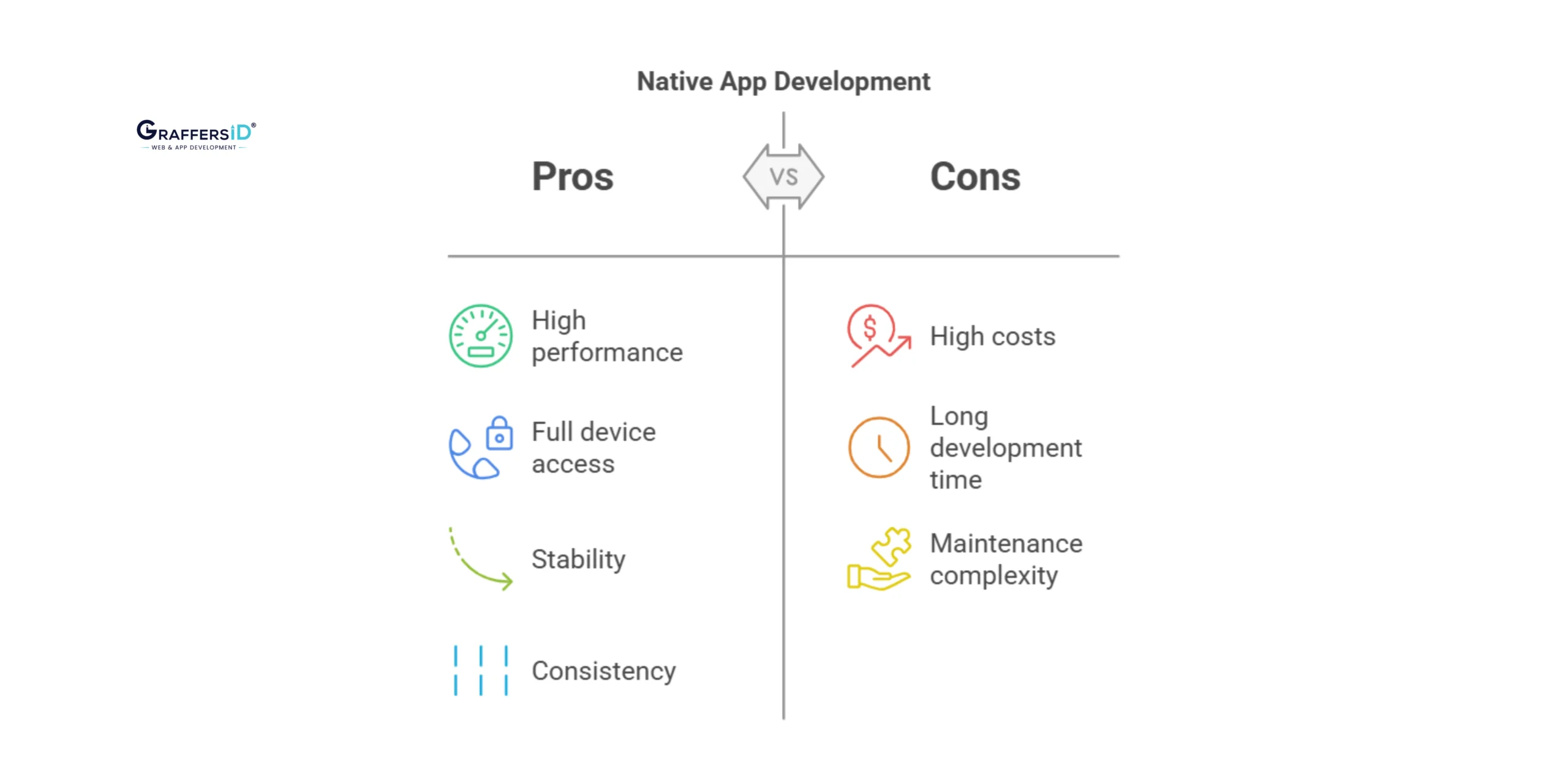
Challenges of Native App Development
- Higher Development Costs: As different codebases are needed for iOS and Android, the development is costly and time-consuming.
- Longer Development Time: Developing two separate apps can increase the overall development timeline.
- Maintenance Complexity: Maintaining multiple codebases for iOS and Android can be difficult.
GraffersID has skilled mobile app developers who are ready to develop high-quality iOS and Android apps according to your business requirements.
4. A Detailed Comparison of React Native vs Native App Development
A number of factors can impact your decision when choosing between React Native vs native app development. Let’s do a thorough comparison to help businesses and developers make an informed choice.
4.1 Performance & Speed
- React Native utilizes a JavaScript bridge, which results in minor delays during the creation of complex visuals.
- Native apps are better at dealing with complex UI interactions, animations, and heavy computations than React Native.
- Native is best suited for high-performance applications, gaming, and AR/VR, and business applications, social media applications, and MVPs are best suited for native.
4.2 Development Time & Cost
- Development time and cost are greatly reduced because you write one codebase for both platforms. Small companies and startups often opt for this method because of budget constraints and the need for faster deployment.
- Development time and costs are higher since two separate codebases need to be maintained. Large companies or businesses with more investments often use this approach to get a premium, high-performing application.
4.3 Scalability & Maintenance
- Though React Native supports scalability, maintaining the app as it grows might require additional work, particularly in developing advanced native features.
- Native applications are scalable in the long term, particularly for complex or large applications. Maintenance is easier as you work with a single codebase per platform.
4.4 UI/UX & User Experience
- React Native is best suited for simple and modest applications, whereas native apps provide the most smoothness and animations.
- Applications that need AR/VR, 3D graphics, or complicated movements should opt for native development.
4.5 Security & Compliance
- React Native applications are quite secure but may struggle to implement advanced security features as native applications.
- Native apps are more secure because developers can leverage full platform-specific security features and best practices.
4.6 Third-Party Integrations & Future Tech
- React Native is a constantly changing platform that supports many third-party libraries and integrations. However, some modern technologies may require custom native code.
- It is easier to integrate modern technology like AI, ML, and IoT with native development, as it offers advanced support for the latest functions and technologies offered by the platform.
Not sure which approach will work best for your company? GraffersID can help you make decisions and provide a cost-effective development solution based on your specific needs.
5. Who Should Choose What?
To assist both developers and businesses in selecting the best option for their requirements, the following decision chart is presented:
| Type of User | React Native | Native |
| Startups & Small Businesses | Fast development, cost-effective, quick MVP launch | May not be suitable due to higher costs and longer timeframes |
| Large Enterprises | Good for simple apps, but native is better for complex apps | Best for scalability, security, and long-term performance |
| Developers & Engineers | Easier to learn, cross-platform skills | Mastery of specific platform languages, better career prospects for specialized roles |
| Product Managers | Balances speed, cost, and UX | Superior UX, security, and performance for advanced apps |
Read More: Top 10 Companies That Use React Native Successfully
# Quick Decision:
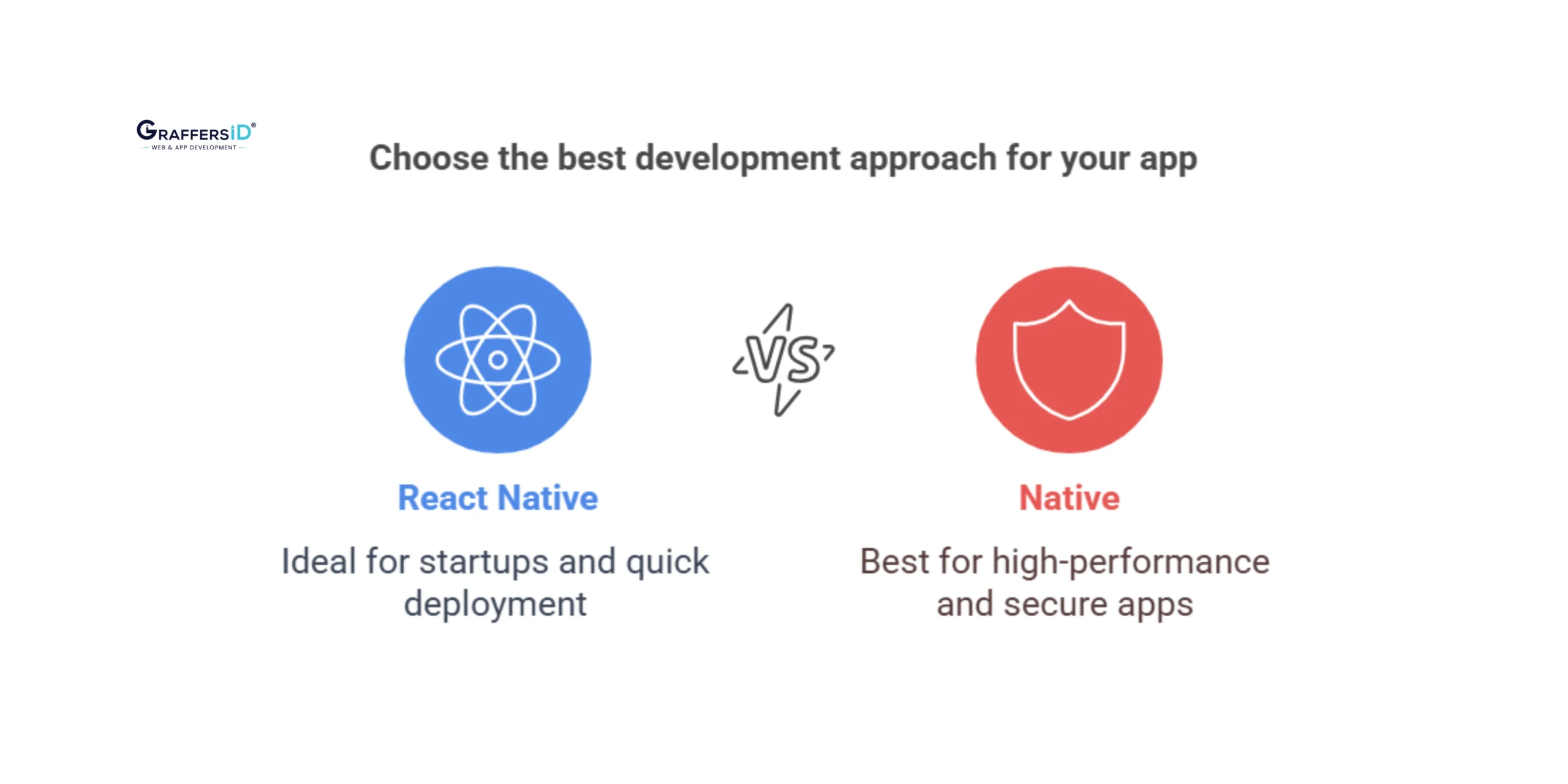
1. React Native is Best For:
- Startups
- MVPs
- Businesses needing fast deployment
2. Native is Best For:
Conclusion: Which One Is Best for You?
The choice between React Native vs native app development in 2025 will depend on the particular requirements of your project, its budget, and its long-term goals. Choose React Native if you require quicker development, cost savings, and cross-platform coverage. Otherwise, Native development if your application demands high performance, security, and deep integration with the system.
Ultimately, your decision should take into account not only the technical aspects but also the business requirements, timeline, and budget constraints. Whether you choose React Native or Native, the goal is to build an app that provides an excellent user experience, meets performance standards, and scales with your business. Make sure that the development approach you choose aligns with your needs in 2025 and beyond.
If you’re still not sure which development method is ideal for your project, GraffersID’s team of professionals can assist you in overcoming the complexities and create a tailored solution that suits your requirements and objectives. Reach out to us today to plan your next mobile app development project!
